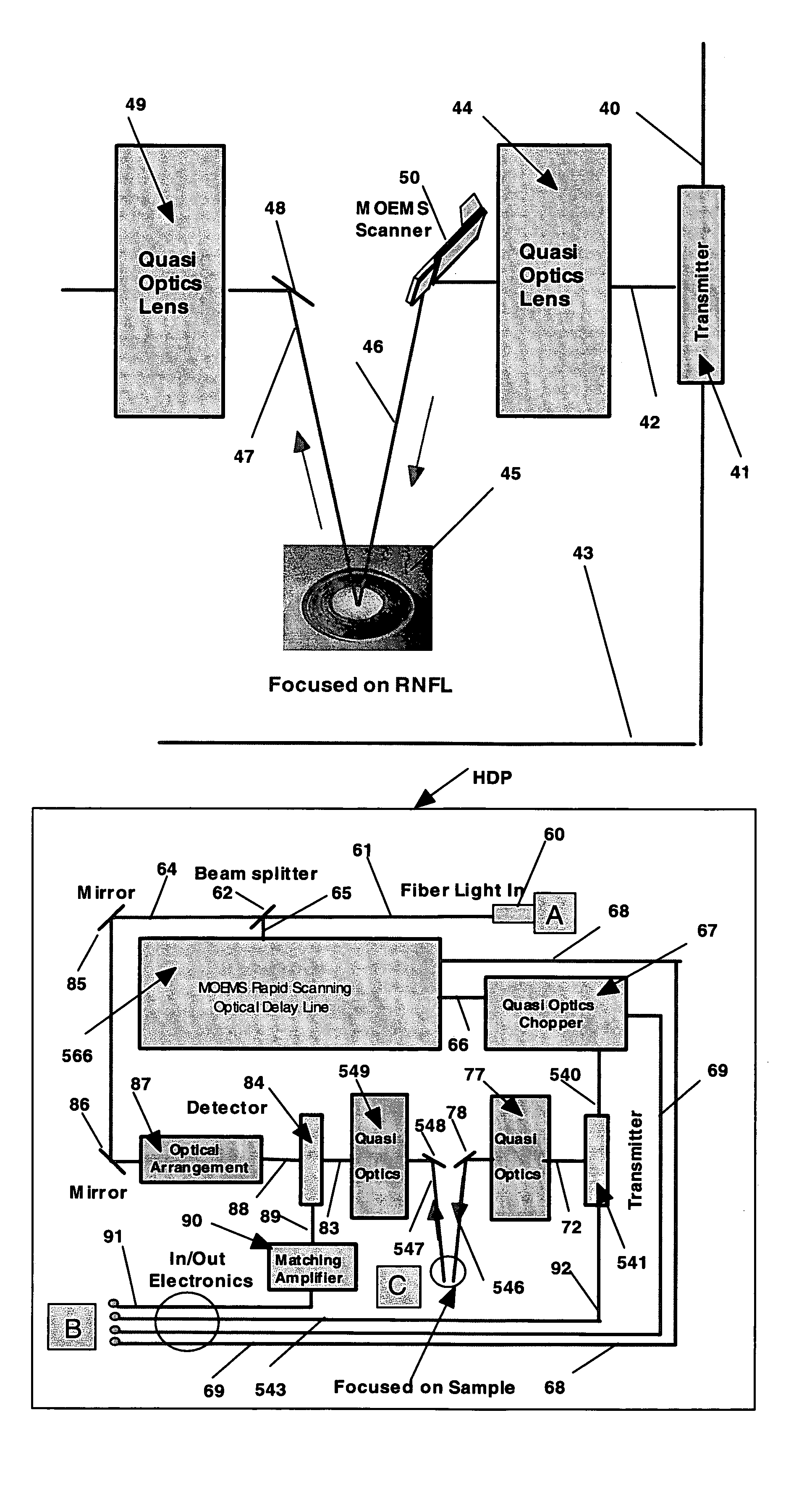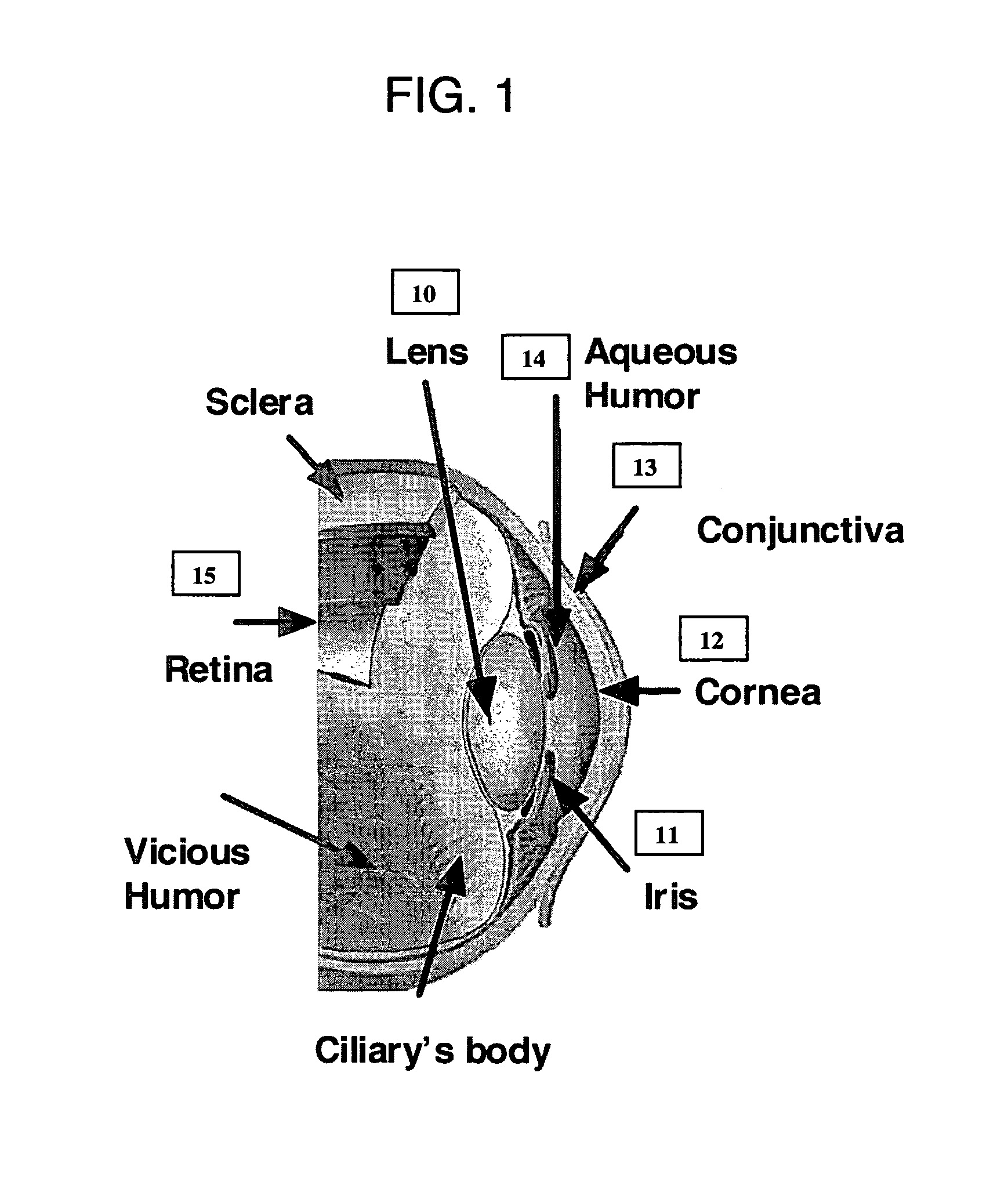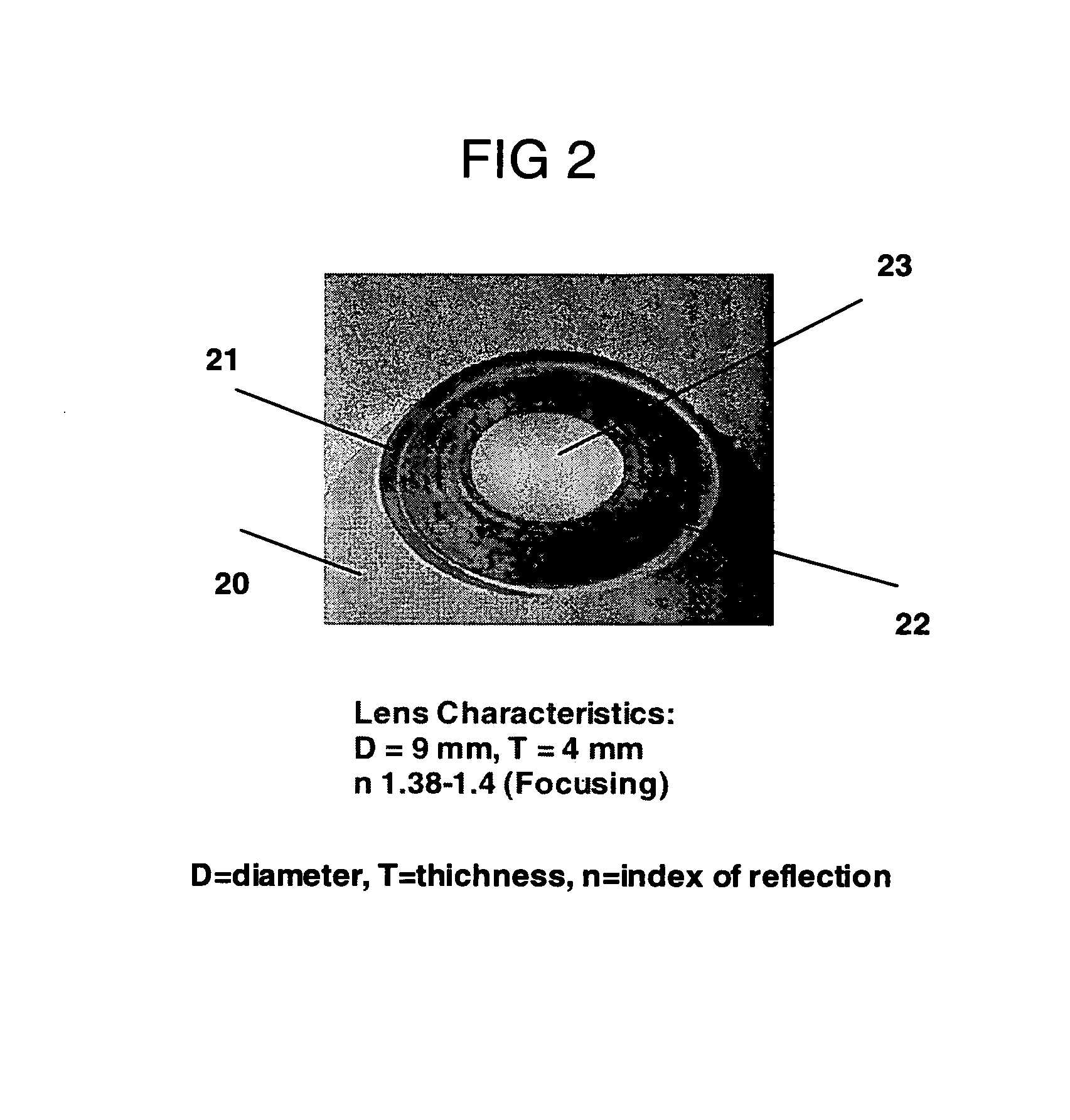Method and apparatus for early diagnosis of Alzheimer's using non-invasive eye tomography by terahertz
a technology of terahertz imaging and eye tomography, applied in the field of non-invasive detection of can solve the problems of only promising cures and/or successful treatment of alzheimer's, unable to detect early development of alzheimer's, and unable to achieve the effects of successful treatment, no ambiguity, and accurate diagnosis of ad
- Summary
- Abstract
- Description
- Claims
- Application Information
AI Technical Summary
Benefits of technology
Problems solved by technology
Method used
Image
Examples
Embodiment Construction
[0032]FIG. 1 is a diagram of the human eye's structure which shows the lens 10 dimension relative to other elements of the eye. The lens focuses light rays onto the retina. An iris 11, the color part of the eye changes the amount of the light requires for optical processing. The eye acts as a perfect high resolution camera. It uses its variable index of reflection to dynamically focus a subject. Cornea 12 is bounded between conjunctiva 13 and aqueous Humor 14. Retina 15 works as an image processor to convert incoming rays into nerves signals where the brain analyzes the signals and creates the image.
[0033]FIG. 2 is a close up picture of the eye 20 where the lens 21 is partially exposed by iris 22 acts as a diaphragm and partially exposed the lens in the opening pupil 23. The lens normal characteristics have shown in FIG. 2. FIG. 3 shows a comparison between Alzheimer's plaques deposited in the lens of the patient's eye and the cataracts plaques deposited similarly in the lens of the...
PUM
 Login to View More
Login to View More Abstract
Description
Claims
Application Information
 Login to View More
Login to View More - R&D
- Intellectual Property
- Life Sciences
- Materials
- Tech Scout
- Unparalleled Data Quality
- Higher Quality Content
- 60% Fewer Hallucinations
Browse by: Latest US Patents, China's latest patents, Technical Efficacy Thesaurus, Application Domain, Technology Topic, Popular Technical Reports.
© 2025 PatSnap. All rights reserved.Legal|Privacy policy|Modern Slavery Act Transparency Statement|Sitemap|About US| Contact US: help@patsnap.com



